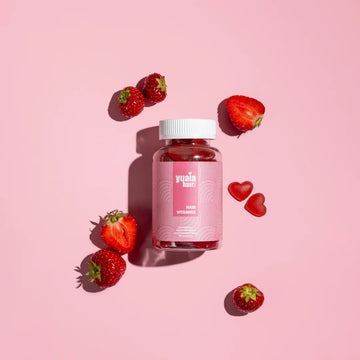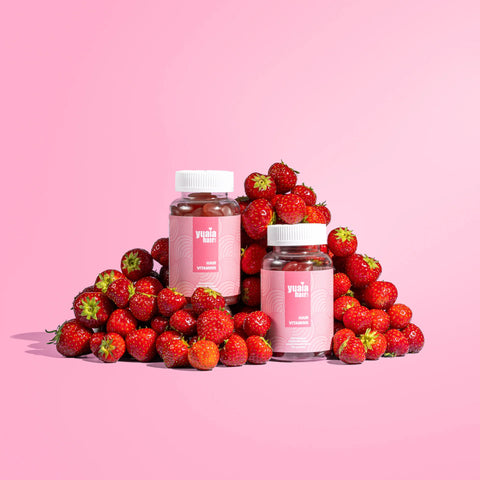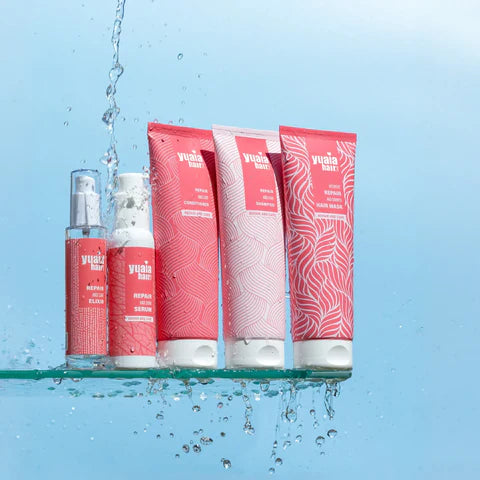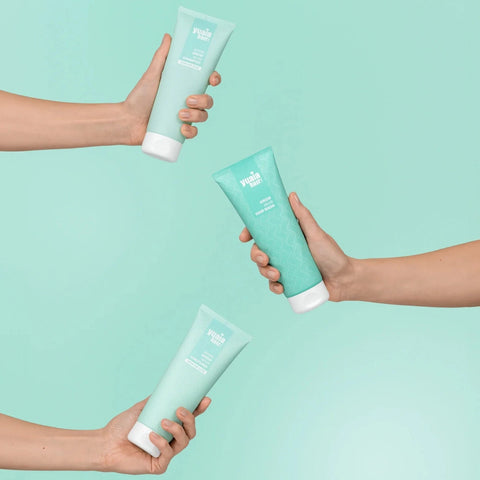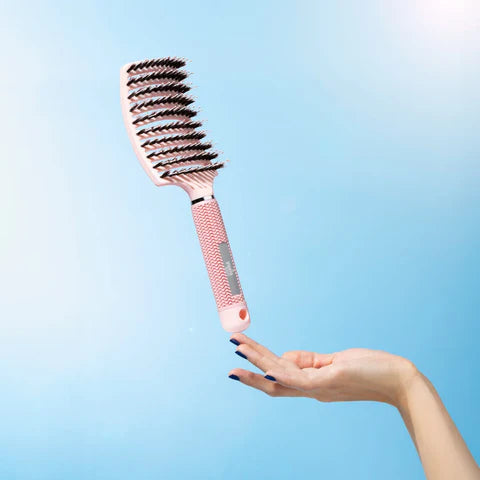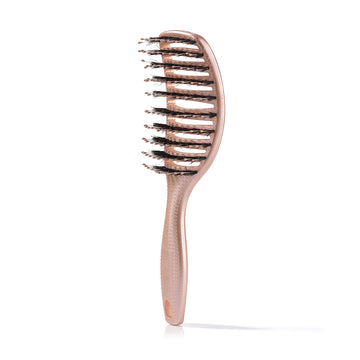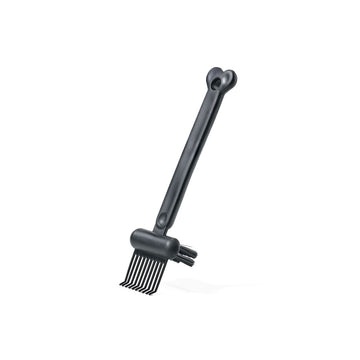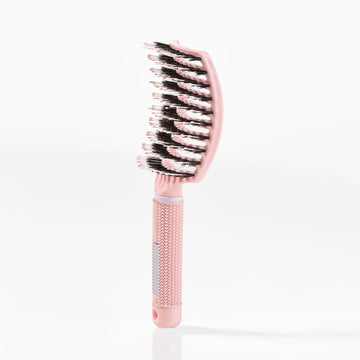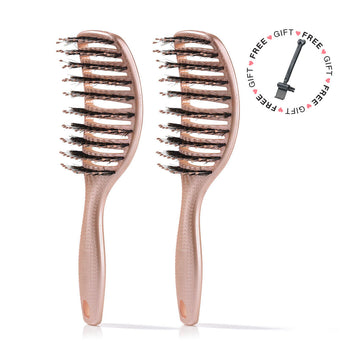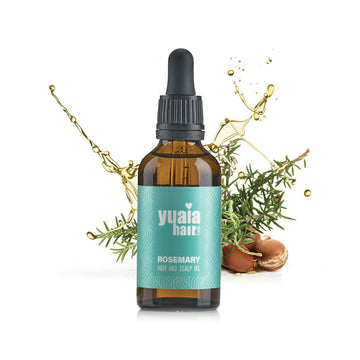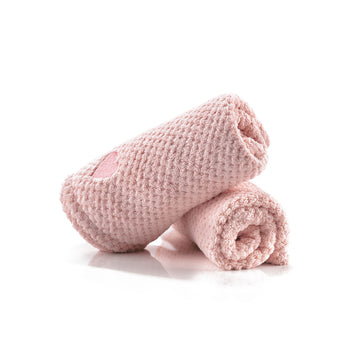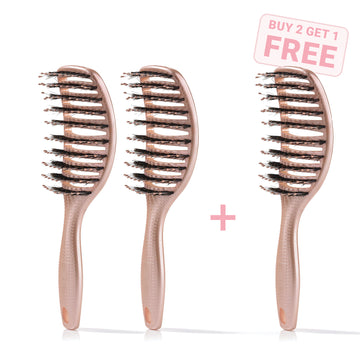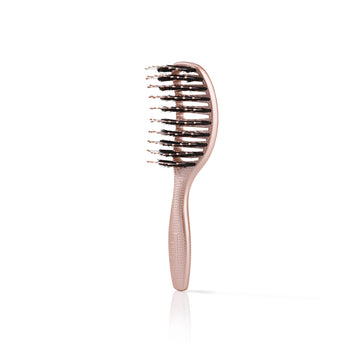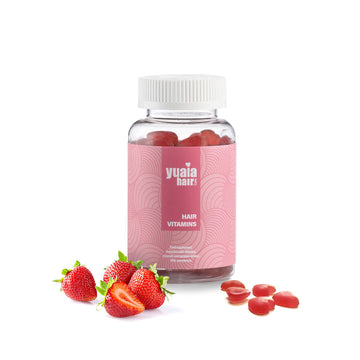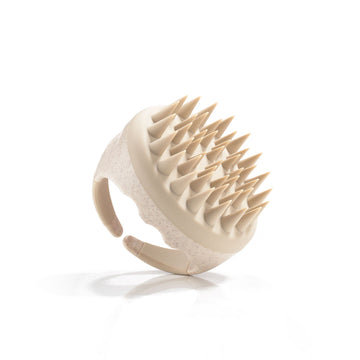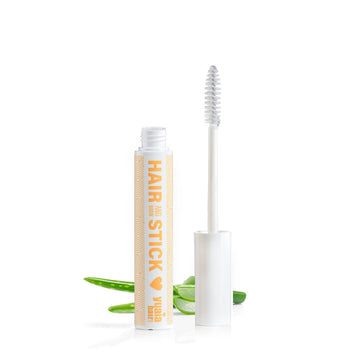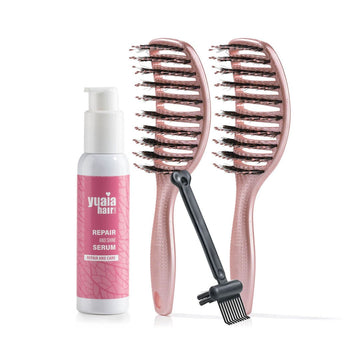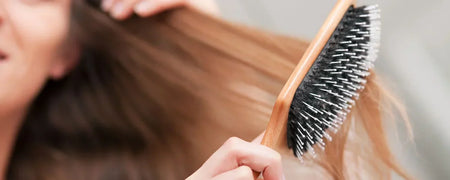
The perfect hair brush for your hair type

by Nanna Bundgaard | 13. June 2023 | Reading time: 9 minutes
Read more about the authorWhich hairbrush you use has a lot to do with how your hair feels. The wrong kind of hairbrush can tear your hair. You might be wondering which hair brush is best for hair. There is no simple answer to that. This is because today there are many different hair types, all of which may need their own type of hair brush.
Do different hair brushes make a difference?
Everyone who has hair, they brush their hair, although you may never have given much thought to the type of brush you use. Using the right hairbrush for your hair and styling needs can make a difference to the health and appearance of your hair.
The appropriate hairbrush for someone with long, curly hair will be drastically different than the best brush for fine or thin hair.
Some brushes, like the round or vented type, are best for styling, while others work to detangle, and some can even handle static and frizz. Here we cover different types of brushes and what they can do for your hair.

Types of hair brushes and combs
There are so many different types of hairbrushes and combs that it can be overwhelming to know which one is right for you. Depending on the type of hair you have, you can use a special brush.
Brush to filter out the hair
Detangler brushes are great for all hair types – even the thickest, curly hair – and can be used on both wet and dry hair. They minimize damage from brushing out knots, and their thin, flexible bristles make it easier to get knots out of children's hair painlessly.
Cushion brush
Cushion brushes have a soft rubber base and stiff wire or plastic bristles. The stiff bristles are effective at stimulating the scalp and are great for brushing away dandruff or buildup from hair styling products and possibly stimulating hair growth.
Boar hair brush
Boar bristle brushes are popular for their ability to redistribute the natural, healthy oils of the scalp, improving hair health and creating smooth, shiny curls. All hair types can benefit from a boar bristle brush, but a 100 percent boar bristle brush with soft bristles is a good choice for people with fine, thinning or aging hair. We have a Curved Paddle Brush - hair brush with boar hair.
Nylon brushes are made of a synthetic material that reduces static electricity and effectively detangles thick hair. Some brushes combine nylon bristles with boar bristles to both reduce static and tangles while still getting the health benefits and natural shine that boar bristles offer.
Curved brush
Curved brushes are ergonomically designed to fit the shape of a human head. Most are made of lightweight plastic and include vents, making them a great choice for travel, the gym, or when you want to dry your hair quickly.
Natural brush
For vegans or anyone who wants the benefits of a boar brush without using animal products, some brushes combine other natural fibers, such as agave, with synthetic materials to create a brush that looks and feels like boar bristles.
Paddle brush
The wide base of paddle brushes means they can quickly cover a lot of ground while smoothing the hair. They are an excellent choice for people with long, straight hair.
Round hairbrush
Round brushes are a good choice for blow-drying hair and styling loose waves. They are completely circular, which makes it easier to blow the hair underneath, resulting in curls or waves (depending on the size of the brush).
Comb with wide teeth
Broad-toothed combs have thick teeth with spaces between them. They can be used on thick or curly hair when it is wet.

Best hair brush for your hair type
Best type of brush for thick hair
A paddle brush is best for thick hair. Try one with a mixture of boar hair and nylon needles; the nylon needles are hard enough to brush thick hair quickly, and the boar bristles increase shine by redistributing the natural oils.
Best hairbrush type for long hair
Paddle brushes can be great for long hair as they allow you to brush through a large section of hair at once, eliminating knots and redistributing oil.
Best hair brush for thin hair
A soft brush is best for thin hair as it is gentle and does not tear the hair out.
Best hair brush for curly hair
People with curly hair may prefer to use a sturdy, wide-toothed comb in the shower.
Best hair brush for straight hair
Paddle brushes work well on straight, long hair because they can work through a lot of hair while distributing oils evenly. A rubber pad brush works well for straight hair that is prone to static.
Brushing Wisely: How to Avoid Damage with Fine Hair
Fine hair, often described as thin or delicate, can be a source of both frustration and delight. It tends to be lightweight and airy, but also prone to breakage and tangles. Brushing, a seemingly simple act, can become a battlefield for fine hair if not done correctly. The good news is, with a few tweaks to your routine, you can transform brushing from a damaging act to a detangling one for your precious strands. Grab the best hairbrush for fine hair, and follow the correct brushing technique.
The Trouble with Traditional Brushing
Our instinct might be to grab a brush and attack tangled hair with vigor. However, this approach can wreak havoc on fine hair. Here's why:
- Rough Brushing: Stiff bristles can snag and pull on delicate strands, leading to breakage.
- Brushing Wet Hair: Wet hair is significantly weaker and more prone to stretching and snapping.
- Starting at the Roots: This pushes tangles down the hair shaft, creating a bigger knot at the ends, which requires more force to detangle.
Brushing Techniques for Fine Hair
Use the best hairbrush for fine hair and incorporate these techniques. You can brush your fine hair with minimal damage and maximum detangling:
● Use Detangling Spray:
If your hair is too tangled, apply a detangling spray or leave-in conditioner before brushing. This lubricates the hair shaft. It makes it easier for the brush to glide through and reduces friction.
● Use Wide-Tooth Comb for Wet Hair:
Ditch the brush altogether while your hair is wet. Use a wide-tooth comb to gently remove tangles. You must start from the ends and work your way up towards the roots of your hair.
● Make Sectioning and Comb in Parts:
Divide your hair into manageable sections, especially when dealing with thick or long hair. This allows you to focus on detangling each section thoroughly without causing excessive pulling.
● Brush from the Ends Up:
The best way to brush your tangled hair is to do it from the tips first. Work your way up the hair shaft gently, patiently removing knots as you go. This will make your hair aligned and prevent more tangles from forming.
● Use The Right Brush:
Opt for a wide-tooth comb, the best hairbrush for fine hair. It should have smooth, rounded bristles for daily detangling. Vent brushes can also be helpful for fine hair, as they allow airflow while brushing. It also reduces pulling. Look for brushes specifically designed for fine or fragile hair, often featuring soft, flexible bristles.
Beyond Brushing: Gentle Hair Care for Fine Hair
Brushing is just one piece of the puzzle. Here are some additional tips to keep your fine hair healthy and happy:
● Minimize Heat Styling:
Heat can damage all hair types, but fine hair is especially susceptible. Air-drying whenever possible is ideal. If you must use heat styling tools, apply a heat protectant spray beforehand and use the lowest heat setting that gets the job done.
● Gentle Hairstyling:
Tight ponytails, braids, and headbands can put stress on fine hair. Opt for looser styles and use hair ties specifically designed for delicate hair to prevent breakage.
● Nourishing Hair Care:
Fine hair can benefit from a regular deep conditioning treatment. Look for products that are lightweight and formulated for fine hair to avoid weighing it down.
● Silk Pillowcase:
Cotton pillowcases can snag and rough up your hair while you sleep. A silk or satin pillowcase reduces friction, helping to prevent breakage and frizz.
Embrace Your Fine Hair
Fine hair has its own unique beauty. Use the best hairbrush for fine hair. By following these brushing and hair care tips, you can minimize breakage, enhance manageability, and unleash the full potential of your delicate strands. Remember, with a little extra care, your fine hair can be strong, healthy, and beautifully you.
Thick and Fabulous: How the Right Brush Can Enhance Your Thick Hair
Taming thick hair can feel like a daily battle. Brushing can be a nightmare, leaving you with a tangled mess and a sore arm. But what if the problem isn't your hair, but your brush? Finding the best hairbrush for thick hair is the key to unlocking its full potential. The right brush can detangle with ease, minimize frizz, and boost shine, leaving you with thick, healthy, and fabulous hair.
The wrong brush can be your worst enemy. Bristles that are too flimsy won't get through your thick mane, leaving knots behind. Brushes with big, round heads can be difficult to maneuver and cause pulling.
Understanding Your Hair Type
Thick hair comes in many textures - straight, wavy, curly, or coily. Knowing your hair type helps choose the best hairbrush for thick hair. Straight or wavy hair benefits from different brushes than curly or coily hair. Brushing techniques also vary depending on texture.
Let's explore some brush heroes for thick hair:
- Wide-tooth combs: These are your detangling BFFs. Start at the ends and work your way up, gently easing out knots.
- Paddle brushes: These flat, wide brushes are great for smoothing and distributing natural oils.
- Wet brushes: These detangling wonders have flexible bristles that glide through wet hair, minimizing breakage.
- Boar bristle brushes: Natural boar bristles help distribute scalp oils, adding shine and reducing frizz.
Once you have found the best hairbrush for thick hair, brushing becomes easy. Here's how to brush like a pro:
- Detangle before showering: This minimizes breakage when your hair is at its most vulnerable – wet.
- Start at the ends: Work your way up in sections, gently loosening knots.
- Brush with gentle strokes: Avoid rough yanking, which can damage your hair.
- Brush regularly: Brushing helps distribute oils, keeps your hair healthy, and removes loose strands.
With the right brush and a little care, your thick hair will transform from a tangled mess to a mane of bouncy, healthy waves or sleek, shiny locks. Choose the hair brush for your thick hair and brush them the right way. So go forth and flaunt your thick and fabulous hair with confidence.
Get a 10% discount code sent to you
Receive the best tips and tricks for your hair from Lotte and Nanna 🥰
 2-4 day UK delivery
2-4 day UK delivery
 25.000+ satisfied customers
25.000+ satisfied customers
 Satisfaction Guarantee
Satisfaction Guarantee

